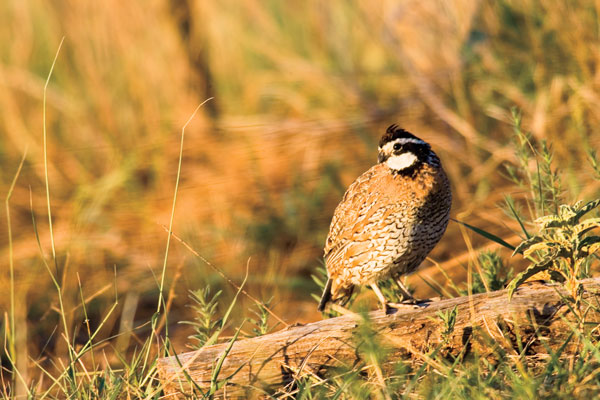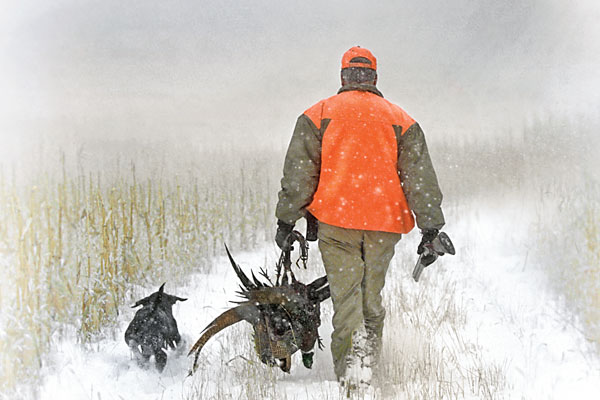 Pheasant and quail populations fluctuate dramatically in response to weather, and the most influential kind of weather depends upon the region. Throughout the eastern half of the U.S., winter severity and spring nesting climate are crucial factors; out West the most important variable is moisture. Drought is the primary concern, because it depletes cover and the forage base upon which young gamebirds depend.
Pheasant and quail populations fluctuate dramatically in response to weather, and the most influential kind of weather depends upon the region. Throughout the eastern half of the U.S., winter severity and spring nesting climate are crucial factors; out West the most important variable is moisture. Drought is the primary concern, because it depletes cover and the forage base upon which young gamebirds depend.
Unfortunately, winter was brutal on the birds throughout much of North America. The Midwest experienced one if its coldest winters in history during 2013-14. Snowfall totals were at least 50 percent above normal in most areas, and bitterly cold temperatures persisted for record durations. The Great Lakes recorded the second most extensive ice cover ever, and the Southeast experienced a Category 3 winter storm in February. In the Southwest, many areas continue to suffer from extreme drought.
We are also witnessing the slow extinction of the Conservation Reserve Program (CRP). CRP has been vital for water quality, soil conservation and wildlife habitat, but program enrollment has dwindled by about 12 million acres since 2007. At the start of 2014, nationwide CRP enrollment stood at about 25 million acres, the lowest figure since 1988. This represents a habitat loss of an astounding 19,000 square miles.
You're going to have to work for your birds this year, no matter where you go. Here's a brief rundown of contact info, seasons and reports from around the nation.
Alabama
Visit: Alabama Department of Conservation and Natural Resources
Quail season: 11/8/14 — 2/28/15; 8 daily limit.
Outlook: Quail harvests have plummeted 95 percent over the past 40 years. However, in 2013 state management efforts on public lands were beginning to produce good numbers on WMAs such as Lauderdale, Barbour, and James D. Martin. Many reported hearing quail in areas where they had not heard them in more than a decade. Look for bobs in longleaf pine restoration areas. The Barbour WMA alone has more than 4,000 acres of longleaf restoration underway.
Arizona
Visit: Arizona Game and Fish Department
Quail season: 10/3/14 — 2/8/15; 8 Gambel's, Scaled and California; 12/5/14-2/8/15; 8 Mearns. Daily limit is 15 of which no more than 8 may be Mearns.
Outlook: With more than 87 percent public land, it's easy to find hunting ground in Arizona. As for bird populations? It was too early at press time to tell how this year's monsoons will affect numbers. However, southeastern Arizona's Mearns quail habitat received two consecutive years of timely monsoons going into last hunting season.
Consequently, the population was building momentum. Most traditional Gambel's quail areas are still struggling with moderate to severe drought. As of this spring, the least drought-stricken Gambel's habitat was in far southwestern Arizona. Before you go, check out the state's current quail forecast. Also be sure to check out the department's quail page.
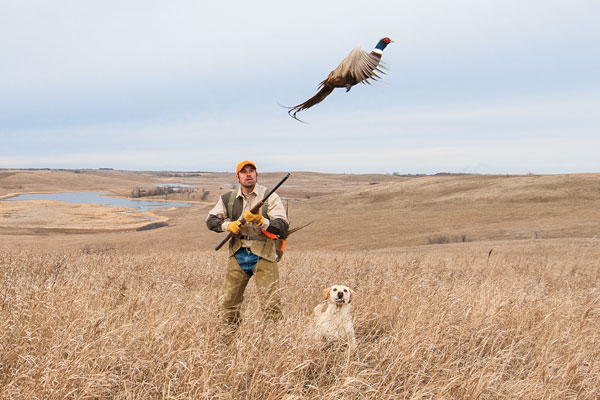 Arkansas
Arkansas
Visit: Arkansas Game and Fish Commission
Quail season: 11/1/14 — 2/1/15; 6 daily limit.
Outlook: Bobwhites are pretty scarce in this state (there's not even a designation for them on the state's Game & Fish site). However, the Commission and private volunteers have poured a lot of effort into habitat restoration on the Oachita National Forest in recent years. Their work is bound to pay off, since the weather in recent years has been at least tolerable for bobwhites.
California
Visit: California Department of Fish and Wildlife
Quail season: October 28 to January 25 at press time (Zone Q1 & Q3); September 27 to January 25 (Zone Q2); Daily limit generally 10.
Pheasant season: Generally November and December on the Delevan, Colusa, Sutter and Sacramento National Wildlife Refuges.
Outlook: Home to three species of quail — Valley, Gambel's and Mountain — many BLM holdings offer public access. Traditionally, Kern, San Luis Obispo and Monterey counties are best for Valley, while Gambel's numbers are highest in San Bernardino, Riverside and Inyo. Mountain quail densities are best in Plumas, Trinity and Siskiyou. Most of California remains gripped in extreme long-term drought.
Consequently, quail hunting has been poor in recent years. This season, focus on southeastern California for Gambel's, where drought has been least severe. Pheasants are very sparse, so stick to the wildlife refuges listed above.
Colorado
Visit: Colorado Parks & Wildlife
Quail season: Vary by region, set in mid-July. Generally second Saturday in November through early January in some units, and extending through Jan. 31 in others. Limits also vary by species and unit.
Pheasant season: Vary by region, set in mid-July. Generally second Saturday in November through early January west of I-25, and extending through Jan. 31 east of I-25.
Outlook: Quail and pheasant habitat is mostly limited to irrigated farmlands along the South Platte and Arickaree Rivers in the eastern part of the state. The good news is the drought that afflicted much of Colorado from 2011 through 2013 has largely ended in the northeastern part of the state along the South Platte.
The bad news is the drought there ended with flooding of some of the best habitat, and southeastern Colorado continues to be bone dry. A newly emerging threat for Colorado's upland birds is the loss of CRP. You'll need to do some scouting this year to make sure the places you've hunted in the past have not gone to the plow. Check out the state's Walk-in Access program.
Florida
Visit: Florida Fish & Wildlife Conservation Commission
Quail season: 11/8/14 — 3/1/15; 12 daily limit.
Outlook: Few state agencies in the Southeast seem to be as serious about bringing back the bobwhite as Florida Fish & Wildlife. Quail have been on the increase over the past few years, but 2013 and this past winter and spring were extremely wet. By late summer, more will be known about the impact of this weather pattern on the birds. The state's limited quota hunts provide quality hunting on WMAs managed for quail. Applications are generally due in December.
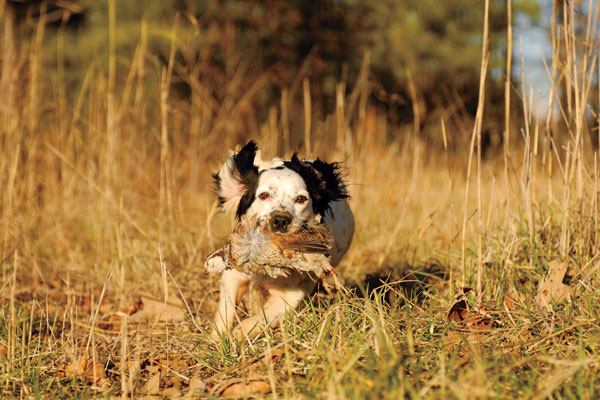 Georgia
Georgia
Visit: Georgia Department of Natural Resources
Quail season: 11/15/14 — 2/28/15; 12 daily limit.
Outlook: Historically a Mecca for wild quail, the pen-raised harvest now outnumbers the wild harvest 5 to 1. Nevertheless, the wild quail outlook had been improving steadily over the past few years. Then the ice and snowstorms of February 2014 hit. It's too early to know the impact, but it surely didn't help.
Focus on the state's public lands managed for quail. Many of those, such as the Di-Lane WMA, offer only limited-quota hunts with relatively low odds of selection. An exception is the Chickasawhatchee WMA, which has 6,000 acres of quail habitat and a fair population.
Idaho
Visit: Idaho Fish and Game
Quail season: 9/20/14 — 1/31/15; 10 daily limit. Quail hunting is allowed only in upland game management Area 1, which is essentially the western half of the state. See website for boundaries.
Pheasant season: Area 1 (Panhandle), 10/11/14 — 12/31/14; Area 2 (Southeastern Idaho), 10/18/14 — 11/30/14; Area 3 (Southwestern Idaho), 10/18/14 — 12/31/14; 3 cocks daily limit statewide. See website for precise boundaries.
Outlook: Winter was fairly normal, but drought persists in southern pockets. Best pheasant hunting in 2014 will likely be in the Clearwater region (Lewiston-Moscow), where moisture levels have been good. Much of Clearwater is private land, but check out the state's Access Yes! program, which has opened 400,000 acres of private land to the public.
Valley quail and bobwhites are hunted in Idaho, with Valley quail more numerous by far. Focus on brushy areas along streams at lower elevations throughout the west-central parts of the state. CRP enrollment is holding steady.
Illinois
Visit: Illlinois Department of Natural Resources
Quail season: North Zone tentatively 11/1/14 — 1/8/15; South Zone tentatively 11/1/14 — 1/15/15; 8 daily limit
Pheasant season: Usually same dates as quail; 2 cocks daily limit.
Outlook: Like much of the Midwest, Illinois suffered a brutal winter that likely took a heavy toll on the state's already-meager pheasant and quail populations. Quail had been on the increase in south-central and west-central Illinois, but hunters were still averaging only 0.90 birds per outing. Pheasant hunting was even worse, with hunters averaging 0.48 roosters per day.
Best pheasant counties are typically Ford, Iroquois, Livingston, McLean, Carroll and Whiteside, but beware some CRP areas you may have hunted in the past may be gone now. Consider applying for one of the state's Controlled Pheasant Hunts that offer good opportunities to fill a game bag on numerous IDNR-managed areas.
Indiana
Visit: Indiana Department of Natural Resources
Quail season: North of I-74, 11/1/14 — 12/15/14 (4 daily limit); South of I-74, 11/1/14 — 1/10/15 (8 daily limit).
Pheasant season: 11/1/14 — 12/15/14; 2 cock limit.
Outlook: Both species had shown meager improvement through 2012. And then the birds were dealt a double whammy. First, June 2013 was the 11th wettest in history. Then the winter of 2013-14 was the ninth coldest on record, and many parts of the state received more than double their normal snowfall.
As a consolation, pheasants are released for put-and-take hunting on several state properties. These are first-come, first-serve and reserved online beginning September 1. See the "Reserved Hunt Info" link on the website.
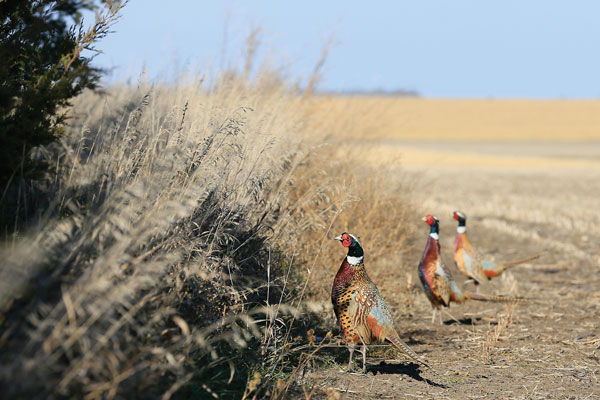 Iowa
Iowa
Visit: Iowa Department of Natural Resources
Quail season: Tentatively 10/25/14 — 1/31/15; 8 daily limit.
Pheasant season: Tentatively 10/2514 — 1/10/15; 3 cock daily limit.
Outlook: Much of Iowa received at least 50 percent greater than normal snowfall over the winter (the state's seventh coldest), not good for a pheasant population already at record lows. Couple that with the continued loss of CRP and 2014 could be a tough season. And I recommend giving the quail a break completely.
Pheasants can be had in pockets of good habitat. Those are primarily in north-central and northwestern Iowa. To find remnant pheasants that were impacted minimally, look to areas with heavy stands of conifers, cattails or other dense cover that affords pheasants protection from severe weather. Focus on private and public lands in counties like Dickinson and Cerro Gordo. Find them with the Iowa Sportsman's Atlas.
Kansas
Visit: Kansas Department of Wildlife, Parks and Tourism
Quail season: 11/8/14 — 1/31/15; 8 daily limit.
Pheasant season: 11/8/14 — 1/31/15; 4 cock limit.
Outlook: Pheasant hunters once harvested more than a million birds per year here, but killed only 200,000 in 2013-14. Although the winter was relatively mild, Kansas is still locked in severe long-term drought. North-central Kansas will probably have the best pheasant densities this year. Quail are doing better in the southeast, where the drought has been less severe. Look for public lands in Region 5.
Kentucky
Visit: Kentucky Department of Fish & Wildlife Resources
Quail season: Eastern Zone, 11/1/14 — 11/7/14 and 11/10/14 — 1/31/15; Western Zone, 11/10/14 — 2/10/15. Daily limit 8 statewide.
Outlook: Quail are surging. Between 2011 and '12, the population increased more than 50 percent. Then the quail in western and central Kentucky doubled in a single year, entering the 2013 season the strongest in years. As usual, the best public-land hunting will be on the massive Peabody WMA in Muhlenberg, Hopkins and Ohio counties.
Private lands in western Kentucky could produce limits. Focus on areas near Bowling Green, Glasgow, and Mammoth Cave National Monument.

Michigan
Visit: Michigan Department of Natural Resources
Quail season: 10/20/14 — 11/14/14; 5 daily limit. Hunting only allowed in 27 counties in southern Michigan.
Pheasant season: Three zones with widely varying seasons; 2 cock daily limit.
Outlook: The Michigan Pheasant Restoration Initiative (MPRI) was enjoying some good results going into the 2013 season, with bird numbers being the highest since 2004. Hunters in Gratiot, Huron and Tuscola counties reported seeing two to three pheasants per hour. And then came winter, the 10th coldest ever, and Detroit recorded nearly seven feet of snowfall. That doesn't bode well for 2014.
Look to last year's hotspots to be the best again for pheasants this fall. Quail hunting will be spotty at best.
Minnesota
Visit: Michigan Department of Natural Resources
Pheasant season: 10/11/14 — 1/4/15; 2 cock daily limit.
Outlook: A $3 Walk-In fee gets you access to more than 20,000 acres of private lands in western Minnesota. But you may be hard pressed to find birds even there, thanks to two consecutive harsh winters. Additionally, more than 300,000 acres of CRP contracts will expire in the next two years, so get the birds while you still can.
Look to the upper Minnesota River Valley this year for best pheasant opportunities. Top public lands include the 33,000-acre Lac qui Parle WMA and the 11,000-acre Big Stone National Wildlife Refuge.
Mississippi
Visit: Mississippi Department of Wildlife, Fish, & Parks
Quail season: Traditionally from Thanksgiving Day through the first Saturday in March; 8 daily limit.
Outlook: The key to finding quail in Mississippi is locating isolated remnants of good habitat, or areas where habitat is being actively restored. The state initiated a new program to restore prairie in 2013. Thus far, the program has primarily targeted the Black Prairie WMA and private lands in the Black Belt Prairie region of northeastern Mississippi.
However, Black Prairie WMA was closed to quail hunting as this went to press. Additionally, the counties of Prentiss, Monroe, Lowndes, Noxubee, Amite, Pike, Walthall Marion, Lamar and Pearl River are being targeted with a state program that assists landowners with prescribed burning to improve habitat. Best chances on public land this year will be found on Hell Creek WMA, which offers limited hunting through a permit process.
Missouri
Visit: Missouri Department of Conservation
Quail season: 11/1/14 — 1/15/15; 8 daily limit.
Pheasant season: Several zones with widely varying dates (see website); 1 or 2 cock daily limit, depending on zone.
Outlook: Missouri had a tough winter, but not as bad as Midwest states farther north. The bobs were already battered by a hard weather year in 2013, so this year's hunting will likely be best in areas that entered the winter with the healthiest populations. That means northwestern Missouri, the Ozarks and southeastern Missouri.
Like most quail states, the key to success is finding land that bucks the nationwide trend of habitat degradation. Consider the numerous WMAs included in the Quail Emphasis Area program. These areas are listed on the website here. Missouri's pheasants rebounded slightly last year after an all-time low in '12. Huntable populations will be found mainly in the northern two tiers of counties.
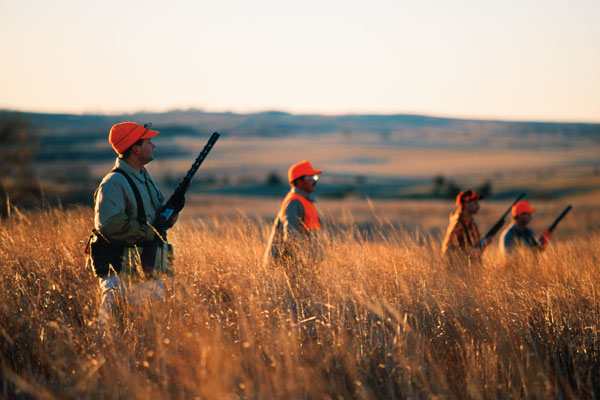
Montana
Visit: Montana Department of Fish, Wildlife, & Parks
Pheasant season: 10/11/14 — 1/1/15; 3 daily limit.
Outlook: Last year's weather was a mixed blessing for Montana pheasants. Major floods in June 2013 impacted nesting, but produced abundant food and cover for the rest of the year. Since the drought has ended, you can expect that habitat to be standing when this season arrives, too. Southeastern Montana should have decent hunting this fall, but the northeastern part of the state has also been emerging as a hotspot in recent years.
Be advised CRP contracts have begun to expire. Some of the state's best public land pheasant hunting is made available through the Open Fields for Game Bird Hunters program. For more information see, visit the site.
Nebraska
Visit: Nebraska Department of Game & Parks
Quail & Pheasant season: 10/25/14 — 1/31/15; 3 daily limit on pheasants, 6 daily limit on quail.
Outlook: Last year the drought was so bad the USDA allowed emergency haying or grazing in more than half of the state's counties in order to reduce the fire risk. Drought has been a downer on pheasant populations, with bird numbers dropping almost 40 percent in 2013. That situation relaxed slightly and only portions of the Panhandle region had escaped from drought, and will thus offer the best pheasant hunting.
Quail populations actually increased last year. The winter was a bit cold, but not as bad as in other Midwestern states, and the snow cover was relatively light. Consequently, winter probably did not unravel the progress quail made last year. Best recent quail increases have occurred in Johnson, Pawnee and Richardson counties. For public access opportunities on private lands, check out the Open Fields & Waters program.
Nevada
Visit: Nevada Department of Wildlife
Quail season: Generally mid-October through early February; daily limit 10. See website for harvest regulations on mountain quail.
Outlook: Depressingly, we've been saying every year drought continues to haunt quail in Nevada. This year is no different. Nevada has three species: valley, mountain and Gambel's. The state's best quail hunting is always found along the western edge, north of the "elbow" bordering California.
This year, aim toward the northern end of this range, where snowfall has been a little better in recent years. But expect to burn a lot of boot leather until moisture conditions improve. For public lands information, check out the maps.
New Mexico
Visit: New Mexico Department of Game & Fish
Quail season: 11/15/14 — 2/15/15; 15 daily limit (only five may be Mearns).
Outlook: The drought levels throughout New Mexico remained at severe to extreme levels. Consequently, quail continue to struggle in New Mexico. However, last year's monsoon rains arrived late, freshening up the cover and bringing off a late hatch. As a result, a fair population of quail entered the mild winter.
Look for best concentrations of scaled and Gambel's quail in southeastern and southwestern New Mexico, with a few Mearns at higher elevations in the southwest. Best counties include Lea, Chavez, Eddy and Dona Ana.
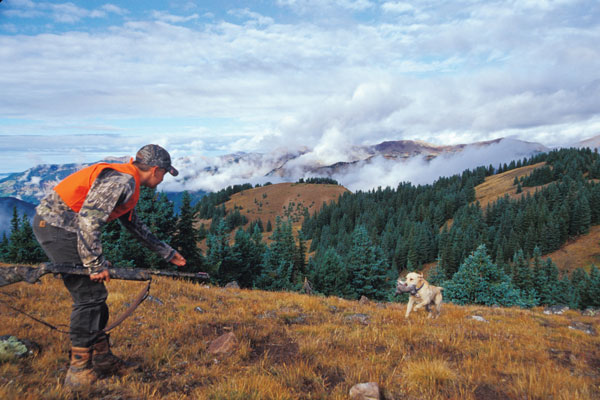
North Carolina
Visit: North Carolina Wildlife Resources Commission
Pheasant season: 11/16/14 — 2/1/15; 3 cock daily limit.
Quail season: 11/22/14 — 2/28/15; 6 daily limit.
Outlook: Upland bird populations have dwindled to paltry proportions in NC. Best chances these days for quail are found primarily in the coastal regions east of I-95. Pheasants are rare, but a huntable population does still exist in the Outer Banks area. Maps to all public hunting lands can be found here.
North Dakota
Website: North Dakota Game and Fish Department
Pheasant season: Tentatively 10/11/14 — 1/4/15; 3 cock daily limit.
Outlook: Declining CRP enrollment threatens the long-term future of an outstanding pheasant hunting state. Meanwhile, good hunting can be had again this year in the southwest, south of I-94 and west of the Missouri River. Last year southwestern NoDak enjoyed pheasant population densities more than twice as high as other parts of the state likely due to less severe winters. Try the Army Corps of Engineers lands around Lake Sakakawea or check out the Private Land Open to Sportsmen (P.L.O.T.S.) program.
Oklahoma
Visit: Oklahoma Department of Wildlife Conservation
Pheasant season: 12/1/14 — 1/31/15; 3 cock daily limit (Open only in designated areas. See regulation guide.)
Quail season: 11/8/14 — 2/15/15 (statewide); 10 daily limit.
Outlook: There was some minor drought relief last year that gave pheasants a little boost. However, some of the nation's most severe long-term drought conditions are in the western half of Oklahoma. Consequently, to find pheasants this year, focus on the best traditional areas in Grant, Texas, Cimarron and Beaver counties.
Quail populations remain well below their long-term average, but have been on the increase of late. Despite the drought, southwestern Oklahoma will have the highest quail populations by far. Check out the quail season outlook.
Oregon
Visit: Oregon Department of Fish and Wildlife
Pheasant season: Generally early October through December 31; 2 cock daily limit.
Quail season: Season dates and limits vary dramatically by zone. Check website in late summer.
Outlook: Eastern Oregon's prime valley quail region was suffering from drought conditions. Therefore, look for best valley quail hunting this year near irrigated agricultural areas where moisture is not a critical limiting factor. Mountain quail continue to be on the increase in western Oregon, and much of their habitat is on public land.
For pheasants, look to the central and western reaches of the Columbia River basin to provide fair to good hunting. Oregon's Open Fields program grants access to many bird-rich private lands.
Pennsylvania
Visit: Pennsylvania Game Commission
Pheasant season: Split season with dates varying widely by unit; 2 daily limit. See website for season dates.
Outlook: Pheasant restoration efforts began in 2007 and are showing excellent success, but a hunting season in the restoration areas is probably still at least a couple of years away. Meanwhile, the Game Commission stocks about 200,000 pheasants per year elsewhere, most of them on State Game Lands. For regional stocking information and maps of the Game Lands, see the PGC website.
South Carolina
Visit: South Carolina Department of Natural Resources
Quail season: Seasons and regulations vary by zone. Additionally, season dates for private and public lands are not the same in many cases. Consult the online regulation booklet.
Outlook: As usual, SC's best quail hunting will be found on "pay-to-play" plantations in the coastal plains region, because that's where the best habitat exists. Significant winter storms hit the Carolinas and Georgia in February, and brought freezing temperatures as far south as the Florida gulf coast. However, it's too early to tell whether this affected quail significantly.
For public land opportunities, good bets include the Webb/Palachucola/Hamilton Ridge WMA complex in Hampton County, Crackerneck WMA in Aiken County, and Draper WMA in York County.
South Dakota
Visit: South Dakota Game, Fish and Parks
Pheasant season: 10/18/14 — 1/4/15; 3 daily limit.
Outlook: The loss of CRP has hurt SoDak pheasants. The bitter cold and deep snows of the 2013-14 winter didn't help, either, and heavy rains in May were followed by temperature plunging into the 30s. All of this may spell a tough season for ringnecks. Nevertheless, a bad day in South Dakota will sometimes beat a good day anywhere else.
This year's prime range will be the band of territory between the James and Missouri Rivers, with Brule, Faulk and Edmunds counties likely topping all others. But wherever you find good habitat in that band, you'll find roosters.
Tennessee
Visit: Tennessee Wildlife Resources Agency
Quail season: Generally early November through the end of February; daily limit 6.
Outlook: Habitat loss has virtually eliminated quail from large portions of the state, and quail are clearly not a high priority for the state's wildlife agency or general public. Mild winters in recent years came to an abrupt halt in 2013-14, but localized pockets of fair hunting may still be found in western Tennessee.
Texas
Visit: Texas Parks & Wildlife
Quail season: Generally late October through late February; 15 daily limit.
Pheasant season: Generally early December through early January in the 37 Panhandle counties only; 3 daily limit.
Outlook: Drought continues to suppress quail populations, although modest gains were made last year. However, the drought has not been equally severe throughout the entire state. Best quail numbers this year will likely be in the Trans-Pecos region of out west, and in the Gulf Prairies region of the southeast.
Those areas are much closer to normal moisture levels than some, and both posted relatively good call counts last year. The Texas panhandle once offered superb pheasant hunting, but habitat loss and long-term drought have reduced bird numbers dramatically.
Utah
Visit: Utah Division of Wildlife Resources
Quail season: 11/1/14 — 12/31/14; Daily limit 5.
Pheasant season: 11/1/14 — 11/17/14; 11/17/14 — 12/7/14 (Extended season); Daily limit 2.
Outlook: Utah hunters kill almost seven times as many pheasants as quail — and they only kill about 40,000 pheasants. Look to private lands in northern Utah for best pheasant hunting, and you can obtain access to many good areas through the Walk-In Access program at http://wildlife.utah.gov/walkinaccess/.
Quail appear to be recovering as the severity of the drought in Utah has weakened. Gambel's quail have been doing much better than valley quail these days. Gambel's numbers will be best south of the Uinta Mountains and in southwestern Washington County.
Virginia
Website: Virginia Department of Game and Inland Fisheries
Quail season: Tentatively 11/8/14 — 1/31/15; 6 daily limit.
Outlook: Quail hunting in Virginia is nowhere near the glory daysr, but it is improving. This is due largely to the valiant efforts of Virginia's Department of Game and Inland Fisheries (DGIF). DGIF biologists have worked with private landowners to restore about 12,000 acres of quail habitat. The best hunting is in southeastern Virginia, where hunters find a covey about every two hours. Much of the land there is private, however. For more information, check out the DGIF page devoted entirely to quail.
Wisconsin
Visit: Wisconsin Department of Natural Resources
Pheasant season: 10/19/14 — 12/31/14; 1 daily limit on opening weekend, 2 thereafter.
Outlook: Pheasants are limited to southeastern and west-central Wisconsin. Populations will almost certainly be poor this season due to extreme cold and heavy snowfalls during the winter. Last year, Barron County was the "best" for wild pheasants, with a roadside survey count of only 1.19 birds seen per 100 miles driven.
Yet Wisconsin hunters bagged over 200,000 pheasants last year. How did they do it? Partly by shooting pen-raised roosters. The DNR operates a game farm that stocks pheasants on public hunting lands. For a map of pheasant stocking sites, check the DNR's site.
Washington
Visit: Washington Department of Fish & Wildlife
Quail season: 9/27/14 — 11/30/14; Daily Limit 10.
Pheasant season: 9/27/14 — 11/30/14 (Western Washington); 10/18/14 — 1/11/15 (Eastern Washington); Daily limit 2.
Outlook: Eastern Washington is an excellent and overlooked destination for upland bird hunting. Valley quail are the main entrée, but you can find mountain quail out west. Look for good quail hunting and fair pheasant hunting in District 2, which has about 60,000 acres of public land in Lincoln County. The Department of Fish & Wildlife (DFW) maintains an excellent website with abundant info for upland hunters. See the up-to-date forecast by district here.
